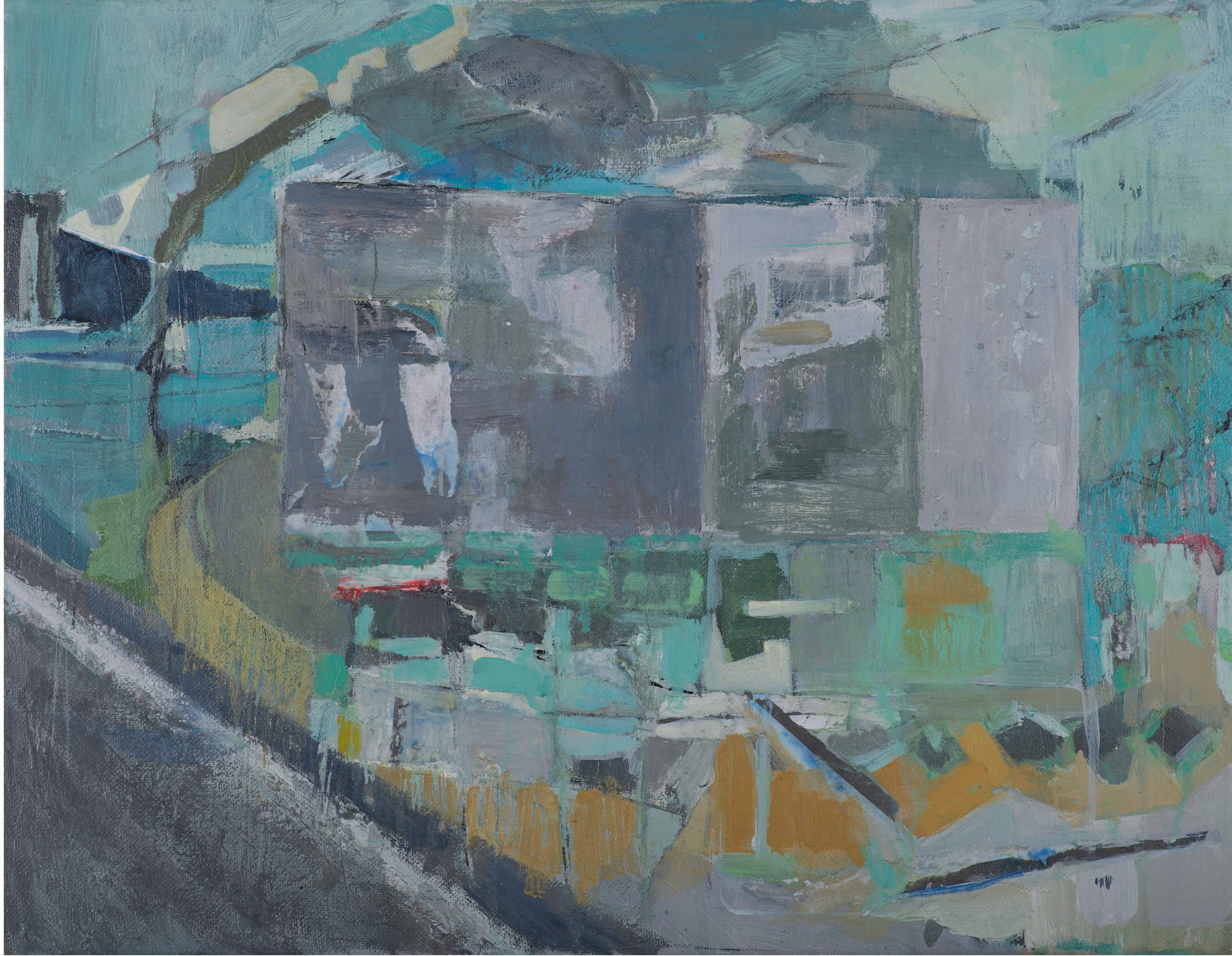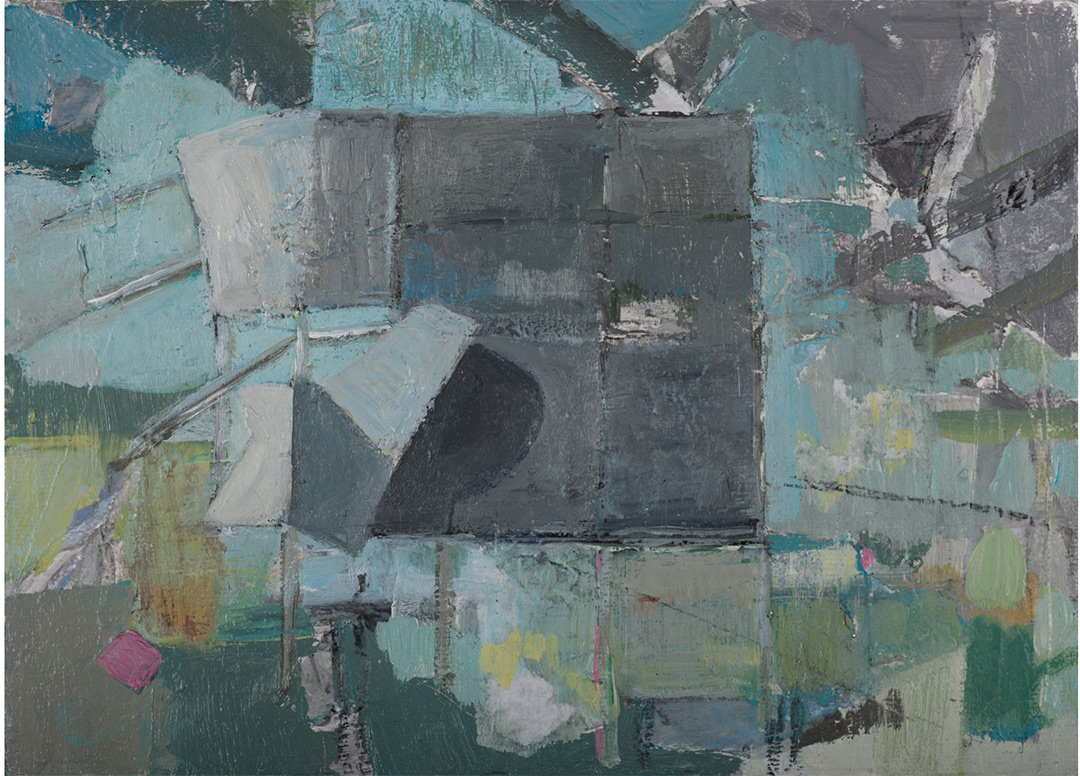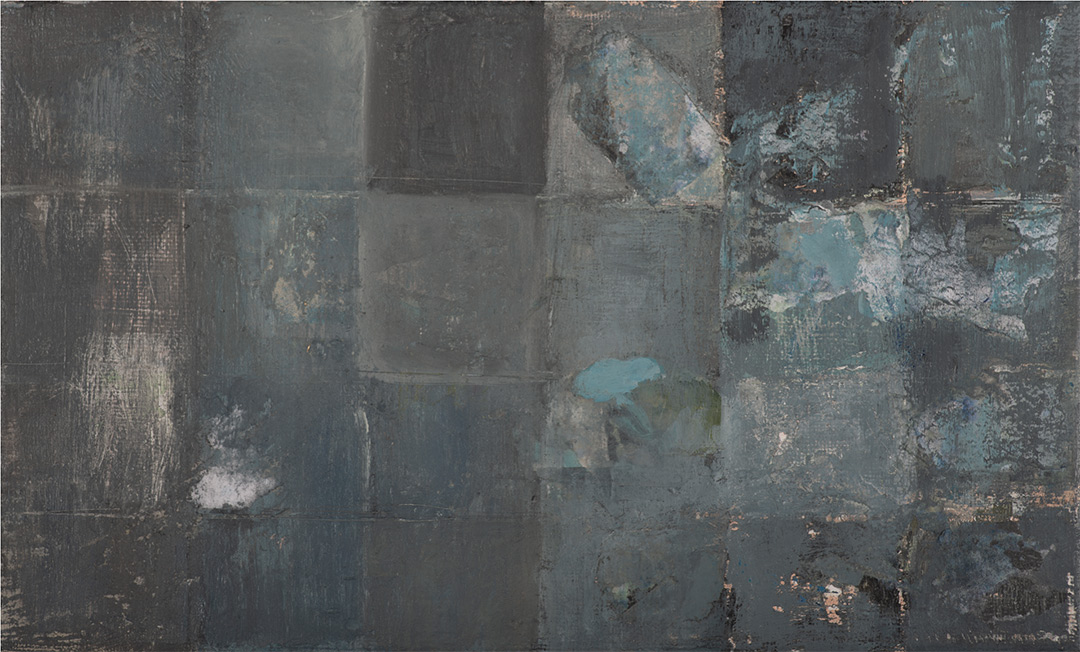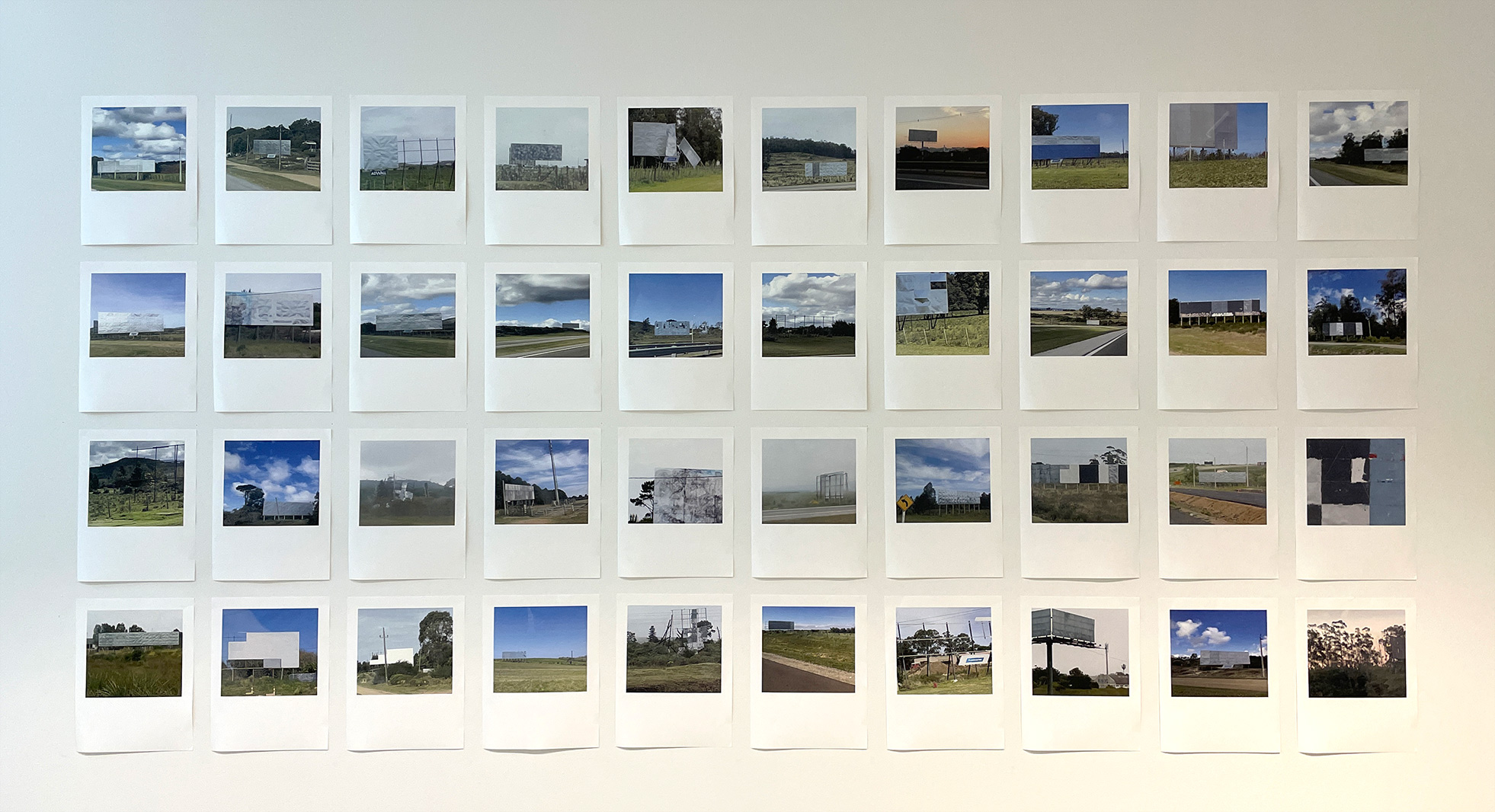Myriam Zini
Lives and works in Montevideo, Uruguay.
By subverting some of the ways the images are disseminated such as newspapers and billboards, Myriam Zini drives us to re-consider these ephemeral objects. Her work deals with memorialization, excavation of meaning, archaeological work on anthropocene’s archaic ruins. By painting on newspapers, by erasing figures and faces, by rescuing some empty billboards, she seems to be telling us “the party is over”.
Myriam Zini
vive e trabalha em Montevidéu, Uruguai.
Em seu trabalho, Myriam Zini subverte algumas das maneiras como as imagens são disseminadas na nossa sociedade, como em jornais e em outdoors, e nos leva a reconsiderar a efemeridade desses objetos. Pintando em sobre jornais, apagando algumas figuras e rostos, ou resgatando outdoors vazios, ela parece constantemente nos dizer que “ a festa acabou”.
SÃO PAULO
Interbalnearia km 48 / billboard #1, 2022 Interbalnearia km 43 / billboard #2, 2022 Interbalnearia km 66 / billboard #3, 2022
Acrylics, charcoal, and paper on canvas
These paintings are derived from a series of color photographs the artist took of empty billboards disseminated along the roads of Uruguay during the last four years. She took most of the photos with a cell phone camera through the window of a car in movement.
The artist presented a selection of those photographs, printed on paper and neatly arranged on a grid, in the previous version of this exhibition. A larger selection of these referential photographs can be found through the QR code below this text.
As referenced in the title, a particular abandoned billboard inspires each of these three abstract paintings. Myriam printed some of the referential pictures during the painting process, tore them into pieces, and stuck and unstuck them from one canvas to the other. This gesture wanted to mimic Nature reclaiming its rights. It reflects the constant trespassing occurring between Nature and human construction. Just like Nature invades human-built structures, these abandoned billboards invade Nature until seeming to be part of it.
For the artist, the paintings are subliminal representations of something no longer there (a working billboard), just as the billboard itself references layers of lost information.
Interbalnearia km 48 / billboard #1, 2022 Interbalnearia km 43 / billboard #2, 2022 Interbalnearia km 66 / billboard #3, 2022
Acrilíca, carvão e papel sobre tela.
Essas pinturas são derivadas de uma série de fotografias coloridas que a artista tirou de outdoors vazios espalhados pelas estradas do Uruguai nos últimos quatro anos. A maioria das fotos foi tirada com uma câmera de celular pela janela de um carro em movimento.
A artista apresentou uma seleção dessas fotografias, impressas em papel e ordenadamente dispostas em grade, na versão anterior desta exposição. Uma seleção maior dessas fotografias de referência pode ser encontrada através do código QR abaixo deste texto.
Conforme mencionado no título, um outdoor abandonado em particular inspira cada uma dessas três pinturas abstratas. Myriam imprimiu algumas das imagens de referência durante o processo de pintura, rasgou-as em pedaços, colando-as e descolando-as de uma tela para outra. Este gesto queria imitar a natureza reivindicando seus direitos. Reflete a constante transgressão que ocorre entre a Natureza e a construção humana. Assim como a Natureza invade estruturas construídas pelo homem, esses outdoors abandonados invadem a Natureza até parecerem fazer parte dela.
Para a artista, as pinturas são representações subliminares de algo que não existe mais (um outdoor funcionando), assim como o próprio outdoor faz referência a camadas de informações perdidas.
MIAMI
Ad-Verse, 2021
Grid of 40 digital prints on cotton paper.
“AdVerse I” is a series of 40 color photographs of equal dimension arranged in a grid four rows high and ten columns wide and taped directly to the wall.
They represent billboards disseminated along the roads of Uruguay, the majority with a cell phone through the car’s window in movement, during four years approx.
The title is a contraction of Ad (first aim of a billboard), and Verse (to signify that these environmental ruins deserve a more poetic way of looking). They emphasize the contrast, the friction between the colored landscape, and the quasi-abstract, white, gray, silver, black tonality of the billboards left empty. Roads waiting for the improbable client, shining in the sun, with their metallic surface, repaired various times, patched, rusted, laid on the floor… silent structures progressively transforming themselves into contemporary environmental ruins full of poetry, a metaphor of the ephemeral of the consumer culture.




ARTISTS / ARTISTAS
- SÃO PAULO
- MIAMI
- NYC
